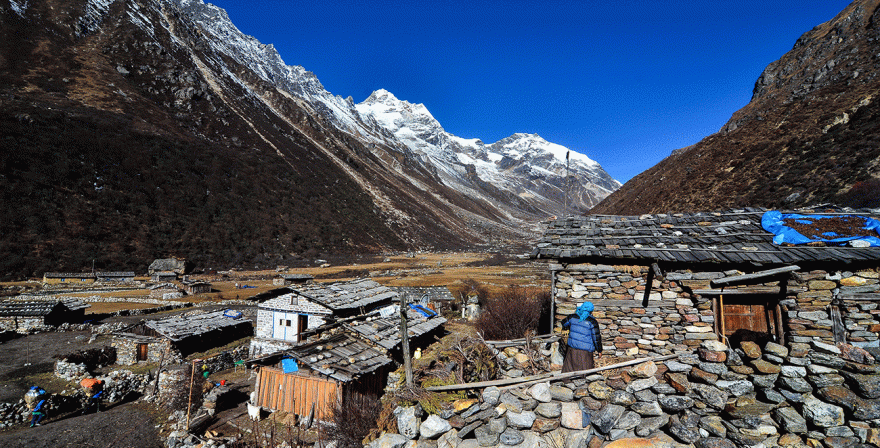
Kangchenjunga Region
Kangchenjunga Region or some people call it Kanchenjunga and it is world’s third highest peak 8,586 m (28,169 ft). Until 1852, it was believed to be the world’s tallest peak. This mountain comes in the border between Nepal and India (Sikkim). Kangchenjunga was first climbed on 25 May 1955 by British expedition team. Kangchenjunga lies in Taplejung District, in the northern part of Nepal. Mount Kangchenjunga is situated about 125 km east-south-east of Mount Everest. It is the second highest mountain of the Himalayas in Nepal. Out of five Kangchenjunga peaks, Main, Central and South are on the border between Nepal and India and two peaks are in Nepal.
Kangchendzönga, Khangchendzonga, and Kanchenjunga are several alternative names Kangchenjunga. Limbu language has the different name for Kangchenjunga which is Senjelungma or Seseylungma. It is believed to be an abode of the omnipotent goddess Yuma Sammang. The Kangchenjunga Himal section of the Himalayas lies both in Nepal and India and encompasses 16 peaks over 7,000 m (23,000 ft). Kanchenjunga is also called Five Treasures of Snow which are Gold, Silver, Precious Stones, Grain, and Holy Scriptures, referring to the five individual peaks.
Brahmins, Rai, Chhetris, Limbu, Sherpa etc. are the local inhabitant people of this area. The fusion of Nepali and Tibetan culture are found during the trip. Similarly, this area is famous for wildlife and several flora-fauna. On the way, the visitors can see wild lives of musk deer, blue sheep, Himalayan bear, etc. Fantastic lush, tropical forests with rhododendrons, orchids, pines, oaks and chestnuts, meadows with grazing yaks, to high alpine environments are also the beauties of this trek.
Nepal opened the Kanchenjunga region to trekkers in 1988 AD. Since Kangchenjunga region is famous for trekking and expedition. The trekking trail is the mixture of both moderate and technical beaten path. The trail leads through terraced pastures, forests of rhododendron, birch and so on. Trekkers can explore Mount Everest (8848 m), Mount Kanchenjunga (8586 m), Mount Lhotse (8516 m), Mount Makalu (8463 m), Mount Chamlang & other 16 snowy mountains of Nepal during the journey.
Kanchenjunga North Base Camp or Pangpema (5140 m) (the local name) is the last point to trek in the Northern side of Kanchenjunga. Similarly, South Base Camp at Oktang (4800 m) and Yalung glacier is the southern side of trekking in Kanchenjunga.
Fly (30 minutes) or drive (10-12 hours) to Biratnagar, drive from Dharan to Basantpur and trekking is one way of getting into Kanchenjunga region. On the other hand, trekkers can take a flight (45 minutes) or drive (2 days) from Kathmandu to Tumlingtar and go for trekking. Normally trekkers use Basantapur way to go to Kanchenjunga North Base Camp and Tumlingtar flight to go to South Base Camp.
Lumbha Sumbha Pass and Mirgin La Pass are the famous passes during the Kanchenjunga Region trek. Autumn & spring are the best season trekking in Kanchenjunga but W Adventures can run this trek throughout the year on the client’s demand.

